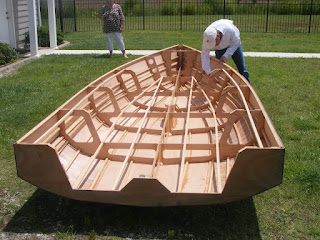The Best Boat Plans for Your Next DIY Project
Constructing a boat from scratch is a challenging yet deeply rewarding endeavor. It demands meticulous planning, considerable skill, and a significant investment of time and resources. However, the satisfaction derived from navigating the waters in a vessel of your own creation is unparalleled. This comprehensive guide explores various boat plans available to aspiring DIY boat builders, considering factors such as skill level, budget, and desired boat type. Careful selection of the appropriate plans is paramount to the success of your project.
Choosing the Right Boat Plan: A Critical First Step
Selecting the right boat plan is the cornerstone of a successful DIY boatbuilding project. The plan should accurately reflect your skill level, available resources, and intended use of the vessel. Improperly assessing these factors can lead to significant frustration, wasted materials, and even potential safety hazards.
Skill Level Assessment
Honesty is crucial when evaluating your boatbuilding skills. Beginner plans often feature simpler designs with fewer complex components and joinery techniques. These plans typically incorporate straightforward construction methods, minimizing the risk of errors. Intermediate plans introduce more intricate designs, demanding greater precision and woodworking expertise. Advanced plans, reserved for experienced boatbuilders, encompass complex hull shapes, sophisticated joinery, and specialized materials.
Budgetary Considerations
Boatbuilding can be a costly undertaking. The price of materials, tools, and any necessary specialized equipment can quickly escalate. Therefore, budgetary planning is essential. Some plans utilize readily available and inexpensive materials, like plywood, while others may call for more costly options, such as fiberglass or marine-grade lumber. Consider the overall cost of materials, including fastenings, coatings, and any specialized tools required before committing to a specific plan.
Intended Use and Boat Type
The intended use dictates the appropriate boat type and subsequently, the most suitable boat plan. A small rowboat for recreational use on calm waters differs significantly from a sturdy fishing boat designed for offshore excursions. Consider factors such as:
- Boat length and capacity: Determine the number of passengers and the amount of cargo the boat needs to carry.
- Hull type: Different hull designs (e.g., displacement, planing, catamaran) offer varying performance characteristics in terms of speed, stability, and fuel efficiency.
- Power source: Will the boat be propelled by oars, a motor, or sails? The plan must be compatible with your chosen propulsion system.
- Operating environment: Will the boat be used on calm lakes, rivers, or open ocean? The design must accommodate the expected water conditions.
Types of Boat Plans Available
A variety of boat plans are readily available from various sources, each with its own advantages and disadvantages. Careful consideration of these differences is crucial for selecting the right plan.
Printed Plans
Traditional printed plans offer a tangible representation of the design, allowing for detailed review and annotation. However, they can be bulky and may not offer the same level of detail or flexibility as digital plans.
Digital Plans
Digital plans, often available as downloadable PDF files, provide greater convenience and accessibility. Many digital plans offer multiple views, detailed diagrams, and even 3D models, enhancing understanding and construction accuracy. Some digital plans may incorporate interactive features, such as material calculators or cutting lists.
Boatbuilding Software
Specialized boatbuilding software allows for customization and modification of existing plans or even the creation of entirely new designs. This option is best suited for experienced boatbuilders who possess a deep understanding of naval architecture and boat design principles.
Popular Boat Plan Categories
Numerous boat types are suitable for DIY construction, each requiring a different set of skills and resources.
Kayaks and Canoes
These smaller vessels are excellent entry points for beginner boatbuilders. Their simpler designs often utilize readily available materials, such as plywood or fiberglass, and require fewer specialized tools. Many plans are available for various kayak and canoe styles, catering to different skill levels and preferences.
Small Sailboats
Building a small sailboat can be a challenging but incredibly rewarding project. These designs often incorporate more complex joinery and require a stronger understanding of boat construction principles. The choice of materials, such as marine plywood or fiberglass, significantly impacts the cost and durability of the final product.
Rowboats and Dinghies
Rowboats and dinghies, similar to kayaks and canoes, represent a good starting point for novice boatbuilders. Their simple designs often use readily available materials, and the construction process is generally straightforward. However, even these simpler designs require meticulous attention to detail to ensure the vessel's watertight integrity and structural soundness.
Larger Motorboats
Undertaking the construction of a larger motorboat requires significant skill, experience, and resources. These projects often necessitate specialized tools, advanced joinery techniques, and a deep understanding of marine engineering principles. Only experienced boatbuilders should attempt such projects.
Essential Considerations Before Commencing Construction
Prior to starting your project, several crucial steps must be completed to ensure its success.
Obtain all necessary materials and tools
Create a comprehensive list of materials and tools required, ensuring all items are readily available before beginning construction. This helps avoid delays and disruptions during the build process. This includes selecting high-quality marine-grade materials that can withstand the harsh conditions of marine environments.
Thoroughly review and understand the boat plans
Spend ample time studying the plans, ensuring a complete understanding of each step. Identify any areas of uncertainty and seek clarification before commencing construction. This minimizes errors and reduces the likelihood of needing to rework components.
Establish a dedicated workspace
Designate a suitable workspace that offers ample space for the boat's construction. Ensure the space is well-lit, climate-controlled, and organized to promote efficient work flow. A cluttered or poorly lit workspace can lead to mistakes and increased frustration.
Building a boat is a significant undertaking, demanding patience, precision, and a commitment to quality. By carefully selecting the right plans and meticulously following the construction process, you can create a vessel that provides years of enjoyment on the water. Remember that safety should always be prioritized throughout the entire building and operation of your vessel.


0 comments:
Post a Comment